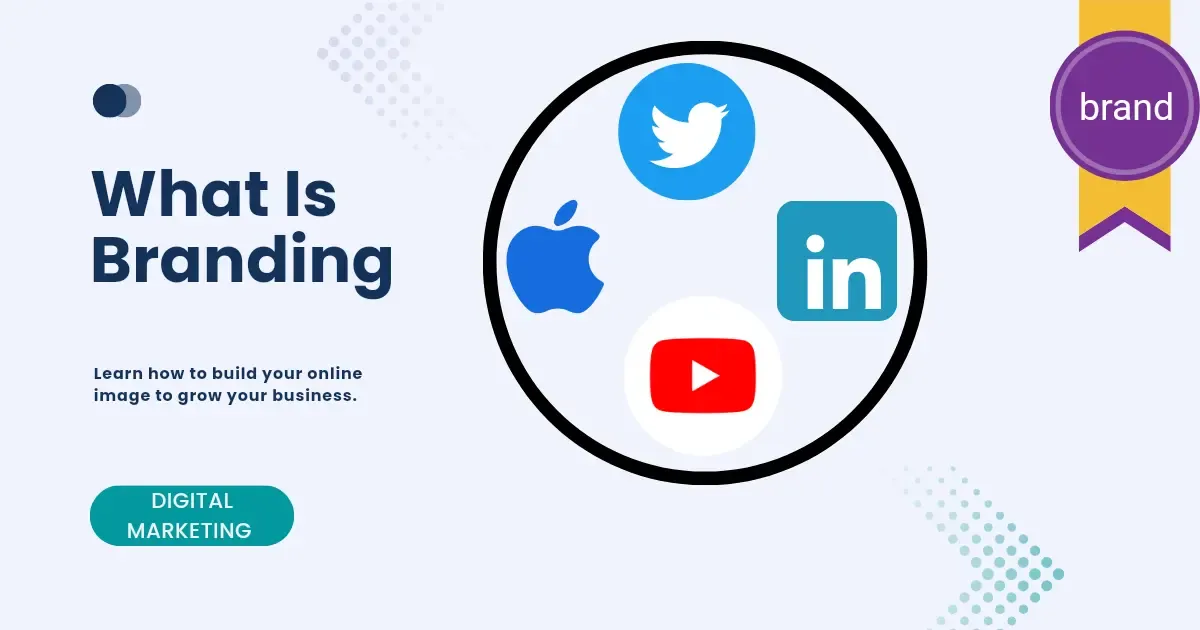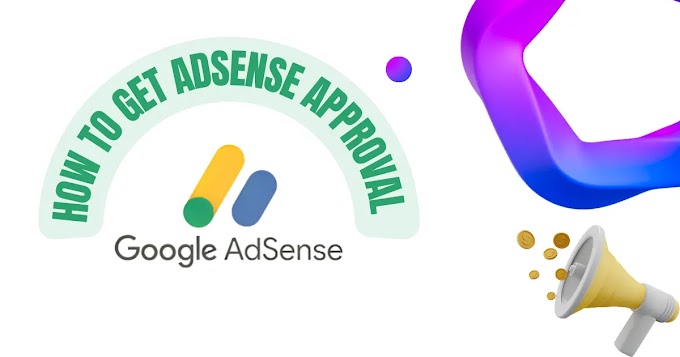What Do You Mean By Branding?
No one takes advice from someone they don't trust—even if the advice is great!
Just as no one believes in the ability of a product or service to make life easier when offered by an unknown company—no matter how true the promise is!
Branding is extremely important in Digital Marketing: without a face and a voice, who will trust your word?
Even worse: who is going to buy from your brand?
Selling in this post-digital Internet era goes far beyond exchanging a solution for money—the act of buying means investing:
• In ideals;
• In culture;
• And in the identity of a business!
Choosing your product or service over those offered by your competitors is a political act on the part of your customers: a way for them to express who they are and what they believe through what your brand represents!
What is branding?
People are not stupid; there are so many businesses on the Internet trying to sell that the only way to defend yourself from these predators is to trust only the words of well-known brands!
It doesn't matter how functional and full of qualities a product or service is—people don't just look at that when they decide to close a deal.
What these people are looking for is a connection: someone they trust who tells them that the decision they made makes sense and that everything will work out in the end!
It is clear that choosing to buy or ignore a product or service is not a rational decision—it is as emotional as:
• Choosing a football team;
• Supporting a political party;
• Or even a person's religion.
The difference between your brand and the examples I gave above is that, while the football team, political party, and religion are some of the practically immutable elements in a person's personality, your company has plenty of room to convince someone to buy from you instead of your competitors!
Such persuasion is achieved through branding in a Digital Marketing strategy — a way of exposing through design and communication:
• The values;
• Identity;
• And the message of your business!
Everything will become clearer in the next paragraphs.
Key Elements of Branding
When I talked about design and communication as a way to showcase your brand's purpose and personality, I meant that the primary function of branding is to influence how your business is perceived by your ideal audience.
How your potential consumers perceive your company goes far beyond having a beautiful logo or a highly functional offer!
What your ideal consumers are eager to see is your positioning in the market.
This is curious because consumers may barely know what the "market" is!
What they certainly know—and what the human brain instinctively does, even with inanimate objects like teddy bears or favorite mugs—is to assign a character value to what they see.
Character is the foundation of a personality: the raw material that shapes the way we act, speak, and the qualities that make a person recognizable in a crowd.
That's why you need to be proactive and consider branding your business as a priority!
If you don't clearly define your brand's character (and its personality in people's minds), you will leave your business at its mercy:
• People's hasty (and wrong) judgments about what your product or service is capable of doing;
• From dominating your competitors to the authority you would like to maintain in your market;
• Or complete anonymity among the many options of more flashy or attractive personalities who are fighting for the attention of the ideal audience that should be yours!
To form a character that is impossible to misunderstand, to create a voice that is impossible to ignore, and a face that is easily recognizable regardless of the brands that surround you, I will present six key elements for nurturing public trust through branding.
Just keep in mind that branding uses:
• From psychology about your ideal audience, to understanding what your audience faces, wants, or fears and thus creating a connection with them;
• The purpose of your brand as the basis for building the character and personality it will represent to the public;
• And design as the face of your business: a visual, easy-to-recognize representation that encapsulates everything your brand represents.
I will break down these elements in detail below!
- Brand Identity
Brand identity is the personality of your business beyond its visual identity, involving:
• The way your business speaks through social media, advertisements, and other types of content.
• The way you respond to people’s queries through customer service.
• The words you use, jargon, or other striking details that, when seen by the public, make it obvious that the person speaking is your business—and no one else!
Brand identity needs to be uniform across all your customers' touchpoints: from text on the blog to the type of image chosen to promote a product or service.
- Visual Identity
Far beyond the logo, visual identity concerns the design of your business's brand manual.
Depending on the way you want your company to be perceived, your design will use different:
• Colors.
• Letters (typography).
• And complementary symbols to represent the spirit of your company!
In the case of a brand in the B2B sector (business to business), it is common to see a lot of blue, right-angled typography, and a strong appeal to rationalization through technological symbols.
- Message and Purpose
What provides the basis for developing an efficient brand identity is the purpose of your business: what legacy does it want to leave for the world?
To answer an intimidating question like this, you need to go back to your company’s roots to define:
• The mission (the result that your brand wants to bring to the public).
• The vision (the future that your company would like to make come true for itself and others through the services and products it offers).
• And the values (which behaviors you value and which you don't accept—in other words, it's the "culture" by which you exist).
Also known as MVV!
With a mission, a vision, and defined values, the next step to creating a solid identity is to integrate these elements into:
• A narrative that humanizes the purpose of your business ("To make the best coffee in the world available to everyone," as in the case of Starbucks).
• And a purpose that drives it ("Transforming people's lives by making the best coffee in the world and carrying out business that contributes positively to the environment").
- Communication
Creating your brand's mission, vision, and values is part of business planning that is done behind the scenes but has a direct effect on how the public sees your business.
It is from the narrative of your purpose that your company will have a guide to maintain standardization with regards to:
• The treatment of customers.
• Personalizing communications with people.
• The style of your advertising actions.
• And reactions to the issues your company will engage with on different channels (such as social media).
Authenticity is fundamental when we talk about personality—and, in communication, this factor could not be different!
Originality comes from your expertise mixed with the way you talk about your ideal audience: you bring people what they need but with practical experience related to your niche that only your brand has!
That’s where your positioning makes all the difference!
- Market positioning
Being the market leader involves more than accumulating the highest percentage of sales in your niche.
Being a leader has to do with the way your company differentiates itself from those that offer similar things to the same audience you serve.
It is from this differentiation that your authenticity is born—and it is from this authenticity that the public chooses to approach (and buy) from you, taking your sales to new heights!
That's what branding is: integrity and coherence expressed clearly for everyone to see what your company does best—and that it's impossible for the competition to copy!
- Customer experience as an integral part
If it hasn't become obvious so far, your audience's perception of your brand is the heart of branding!
The more satisfied people are with what they see about your business, the more proactive they will be in trying to let you win them over!
The only way to do this is to build powerful branding into your Digital Marketing strategy—but such a strategy needs to focus not only on what you have to say but on what your client expects to hear: that 'everything will work out in the end.'
Put another way, the customer expects their own success from the tools, ideologies, and attitudes that only your brand can offer them!
This is what we call Customer Success in Digital Marketing: a way to make sure that the customer leaves this interaction with your company satisfied.
By focusing on Customer Success, the character of your brand will be complete because all points of contact with your audience will be permeated by:
• Trust;
• Authority;
• And recognition.
Isn't that what we expect from a leader?!
Tips for an efficient branding strategy
1. Study the topic well
The first thing you need to do to develop successful branding in your Digital Marketing strategy is to learn about the topic—so just by being here, you're off to a good start!
As you can see halfway through this text, answering "what is branding" without talking about psychology, design, and narrative is leaving out a lot of important information.
2. Establish a unique value proposition
The next step is to identify: what makes your brand different from everyone else?
Knowing the unique benefits that only your business, services, or products can offer to your customers will allow you to determine the exact value your company will represent in their lives!
After identifying your value, you can communicate it through your unique value proposition: a convincing way to sell your product, emphasizing the type of success your consumer will achieve with you!
3. Understand (and delight) your target audience
Knowing the desires, needs, and preferences of your ideal audience will give you the words, means, and even inspiration needed to cultivate through communication:
• Loyalty;
• Confidence;
• And the connection that your client expects to feel to close business with you!
Knowing in-depth who the person you are trying to bring a solution to through your offers is will also help you to serve them excellently—something that makes all the difference in the automated Internet market!
4. Be prepared to adapt
The business world changes with each new method or technology, so be prepared to adapt!
Adjusting your branding strategy is important to continue converting new onlookers into buyers and to keep those customers who insist on buying from you satisfied instead of turning to your competitors.
I recommend once again paying attention to your mission, vision, values, and narratives: they will allow you to maintain the essence of your brand even when the environment in which it finds itself changes radically.
What if you were a brand?
What if you were a brand" is not just the title of another great book about branding and Digital Marketing!
It's also a genuine question for you to understand the weight that your business's identity has in the lives of your ideal customers.
And if you were a brand: what kind of ideals would you be proud to represent?
As you learned in this article, to arrive at a complete answer capable of transforming strangers into buyers, you would have to:
• Understand that branding is not just a Digital Marketing strategy;
• But rather the personality and character that your ideal audience sees in your brand;
• Based on the mission, purpose, and values it values;
• Which are expressed through personalized communication;
• And also the use of design to create visual identities;
• Able to make your business highly recognizable;
• Which increases confidence and brings new (and more) sales!
If your answer to the question "what if you were a brand" is "the one that sells the most!", I have a bunch of other free guides like this one on the Rank it well blog.
You May Also Like
• Creating a blog for success: The 8 essential steps
• SEO Link Building: 5 Techniques to obtain valuable backlinks
• Mastering organic traffic: 5 Successful strategies for your business









